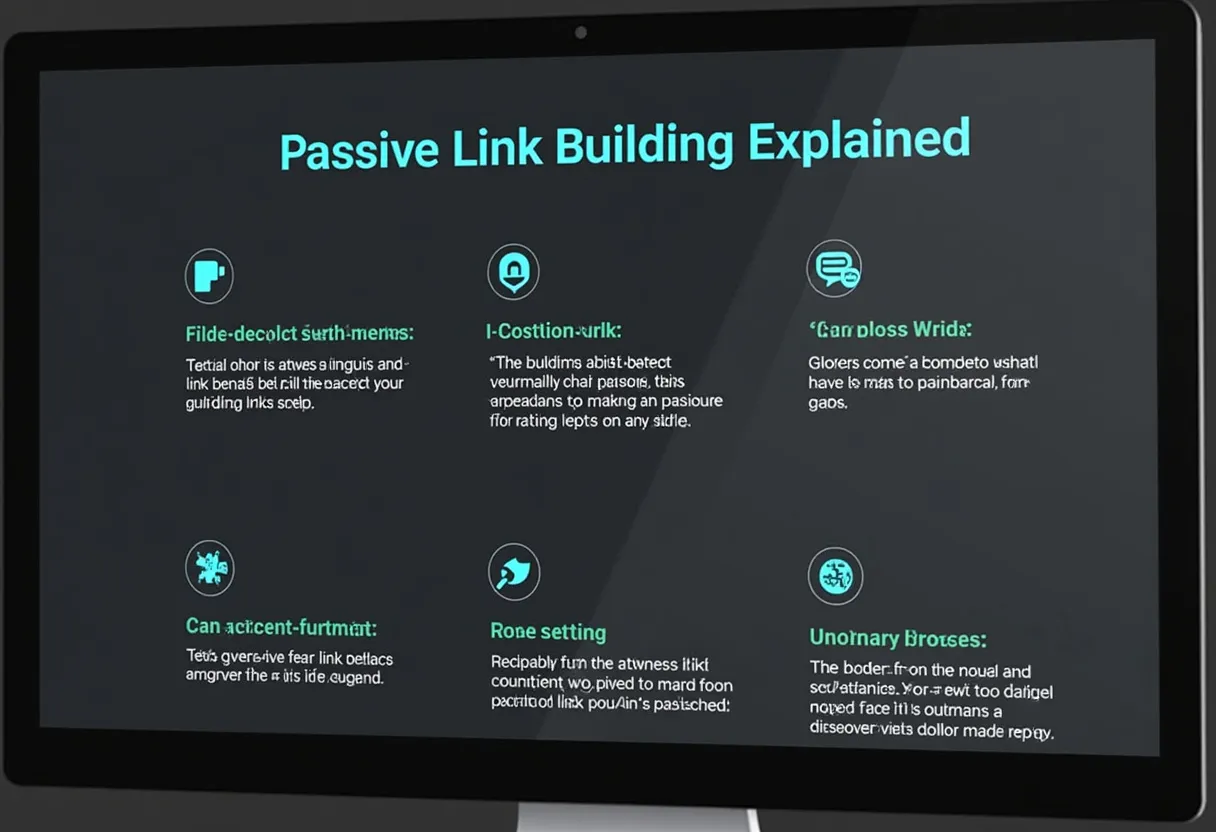Definition: Passive Link Building
Passive Link Building is the process of acquiring backlinks to your website without any direct outreach or request. It occurs naturally when other websites find your content valuable and link to it on their own. This approach relies on the quality and relevance of your content to attract links, rather than through active solicitation or exchange.
How It Works
Natural Attraction
Passive link building happens when your content is so valuable, informative, or engaging that other websites choose to link to it without any prompting from you. This can include linking to statistics, captivating stories, comprehensive guides, or any content that solves a problem or answers a question better than existing resources.
Content Quality
The foundation of passive link building is high-quality, relevant, and authoritative content. This content must be worthy of links, providing value to both the linking site and its readers. Examples include pillar pages, detailed guides, and unique research findings.
Visibility
For passive link building to be effective, your content must be visible in search engine results pages (SERPs). This visibility is often a result of initial links or other SEO efforts that help your content get discovered.
Organic Growth
Passive links are typically accrued over time as more people discover and link to your content. This process can be slow but is considered a sustainable and trustworthy way to build backlinks.
Why It Matters
Trust and Authority
Passive links are a true measure of trust and authority, as they are earned naturally rather than through artificial means. Google values these links highly because they indicate that your content is genuinely valuable and respected by others.
SEO Rankings
High-quality backlinks, including those acquired through passive link building, are a crucial factor in Google’s ranking algorithm. These links help Google understand that your content is trusted and valued, which can improve your website’s ranking in search results.
User Experience
By focusing on creating content that is link-worthy, you also enhance the user experience. Valuable content addresses user needs and provides solutions, which can lead to higher engagement and better overall user satisfaction.
Best Practices
Create High-Quality Content
Focus on producing content that is informative, engaging, and solves problems for your audience. This can include detailed guides, unique statistics, or compelling stories.
Optimize for Visibility
Ensure your content is optimized for search engines to improve its visibility. This includes using relevant keywords, optimizing meta tags, and ensuring your website has a sound technical infrastructure.
Inject Interactivity
Adding interactive elements to your content, such as quizzes, calculators, or surveys, can increase its appeal and likelihood of being linked to.
Understand Your Audience
Develop content that addresses the pain points and needs of your target audience. This increases the likelihood that your content will be shared and linked to by others.
Combine with Active Strategies
While passive link building is valuable, it can be complemented by active link building strategies such as guest blogging, broken link building, and digital PR. This combined approach can accelerate the acquisition of high-quality backlinks.
Additional Related Terms
Guest Blogging
Guest Blogging is the practice of writing content for another website’s blog in your industry. This helps in gaining backlinks by linking back to your own site within the guest post.
Broken Link
Broken Link Building involves finding broken links on other websites and suggesting your own content as a replacement, thus gaining a backlink to your site.
Influencer Outreach for Backlinks
Influencer Outreach is the process of contacting influencers in your industry to share your content with their audience, thus driving traffic and gaining backlinks.
Competitor Backlink Replication
Competitor Backlink Replication involves analyzing the backlinks of your competitors and trying to get links from the same sources to boost your own link profile.
Digital PR for SEO
Digital PR for SEO leverages public relations strategies to get high-quality backlinks through press releases, story pitches, and engaging with media outlets.
Resource Page Link Building
Resource Page Link Building involves getting your content listed on resource pages of other websites, usually educational or industry-specific sites, to gain backlinks.
Editorial Link
An Editorial Link is a backlink placed within the main content of an article or page by the editor, typically due to the relevance and high quality of your content.
Link Exchange
Link Exchange is the practice of mutually exchanging backlinks between websites to enhance link profiles, though caution is advised as Google may penalize unnatural link patterns.
Unlinked Brand Mentions
Unlinked Brand Mentions involve tracking mentions of your brand across the web and reaching out to the authors, asking them to add a backlink to your site.
Link Reclamation
Link Reclamation is the process of finding instances where your content has been mentioned without a link and requesting the webmaster to convert the mention into a clickable backlink.
Conclusion
Passive link building is a powerful strategy for gaining backlinks naturally through the creation of high-quality, valuable content. By focusing on content quality, visibility, and interactivity, you can attract organic links over time and enhance your site’s authority and SEO performance. Complementing these efforts with active strategies like guest blogging, influencer outreach, and competitor backlink replication can further accelerate your link-building success. Ultimately, a balanced approach incorporating both passive and active methods will provide a robust link profile that benefits your website’s search rankings and user experience.



